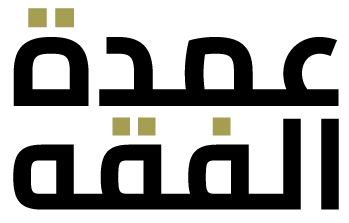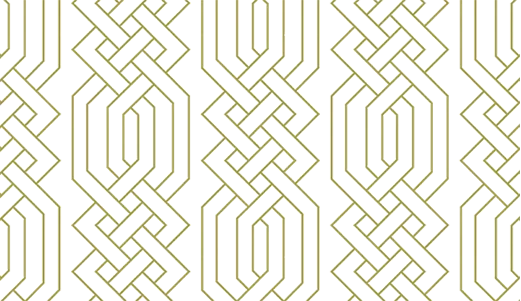
Appendix 4:
Paternity for the Fornicator
مَنْ تُرَدُّ شَهاَدَتُهُ


The Book of Purification
The Book of Prayer
Importance of Prayer & Ruling of its Abandonment
Facing the Qiblah & Intention in the Prayer
Etiquettes of Walking to Prayer and its Description
Description of Prayer Continued
Description of Prayer Continued
Description of Prayer Continued
Pillars and Mandatory Acts of Prayer
Two Prostrations of Forgetfulness
Supererogatory (Voluntary) Prayers
Supererogatory (Voluntary) Prayers Continued
Times of Prohibition of (Supererogatory) Prayer
Congregational Prayers & Latecomers
Jumu'ah (Congregational Friday) Prayer
The Book of Funerals
The Book of Fasting
The Book of Hajj and 'Umrah
Book of Zakat
The Book of Selling and Commercial Transactions
Introduction & Commercial and Selling
Selling of Primary & Secondary Commodities
Cancellation Options in Transactions
Cancellation Options Continued
Debt Transference & Guarantor-ship
Mortgaging & Security Deposits
Partnership & Companies Continued
Reviving Barren Lands & Per-Job Wage
Lost and Found Property & Foundlings
Prize Money & Deposits for Safekeeping
The Book of Bequests
The Book of Inheritance
The Book of Marriage
The Book of Divorce
The Book of Sadaq
The Book of Dhihar
The Book of Lian
The Book of Foods
Book of Fatal and Non-Fatal Assault
The Book of Indemnities
The Book of Hudood
The Book of Jihad
The Book of the Judiciary
The Book of Testimonies
Appendix
Glossary
Appendix 4: Paternity for the Fornicator
In general, paternity of a child is not assigned to a fornicator, because the Messenger of Allah (SA) said, “The child is for the [marital] bed, and the stone is for the adulterer.” 1777 There are exceptions, though.
To determine what the Prophet (SA) intended, it is essential to understand the relevant incident. ‘Â’ishah (RAH) said:
<<‘Utbah ibn Abi Waqqâṣ wanted his brother, Sa‘d, to take custody of the son born to Zam‘ah’s concubine. ‘Utbah had said, “He is my son.”
The Messenger of Allah (SA) arrived with ‘Abd ibn Zam‘ah. Sa‘d ibn Abi Waqqâṣ said, “This is my brother’s son. He assured me that this is his son.”
‘Abd ibn Zam‘ah said, “O Messenger of Allah, this is my brother, the son of Zam‘ah; he was born upon his bed.”
The Messenger of Allah (SA) looked at the son born to Zam‘ah’s concubine and found that he resembled ‘Utbah ibn Abi Waqqâṣ more than anyone else. Thus, the Messenger of Allah (SA) said, “Veil yourself from him, Sawdah,” due to the resemblance of ‘Utbah ibn Abi Waqqâṣ that he noticed. 1778
‘Â’ishah said, “The Messenger of Allah (SA) said, ‘The child is for the [marital] bed, and the stone is for the adulterer.’” 1779
The hadith describes a specific incident when two men were arguing over the paternity of a child; one was the owner of the marital bed, and the other was a fornicator. There was no proof other than the marital bed and the qareenah (corroborative evidence) of resemblance, so the Messenger of Allah (SA) closed the door in the face of this grave evil spreading. Otherwise, fornicators and scandalous men would be emboldened to claim that they were the fathers of children born to women who had husbands.
If a woman is not married, then what is closer to the Sunnah is to attribute the child to the fornicator, in the view of some Mâlikis, al-Ḥasan, Ibn Seereen, an-Nakha‘i, Is-ḥâq ibn Râhwayh, Sulaymân ibn Yasâr, and Ibn Taymiyah. This
1777. Ṣaḥeeḥ al-Bukhâri (2/742); Ṣaḥeeḥ Muslim (2/1080)
1778. Sawdah was the daughter of Zam‘ah. If the concubine’s son was the son of Sawdah’s father, he would have been her maḥram, but as the son of ‘Utbah, he would not be.
1779. The son was attributed to Zam‘ah.
was also the position of the Ḥanafis – on the condition that he marries the woman and the child is born at least six months after the marriage. 1780
There are several evidences, including:
1- The hadith of ‘Ali (RA) about casting lots. Three individuals came to ‘Ali from Yemen, disputing over a child; all three had had intercourse with the same woman during a single non-menstrual period…
He said, “You are all adamant in your claims, so I will cast lots among you. Whoever wins, the child belongs to him, and he must pay two-thirds of the blood money to his two companions.” 1781 He cast lots among them and allotted the child to the winner, which made the Prophet (SA) laugh until his molar teeth could be seen. He did not ask the men if they had copulated with the woman mistakenly, despite that being an extremely unlikely possibility. 1782
2- The hadith of attributing the child to Shareek ibn Saḥmâ’. In front of the Prophet (SA), Hilâl ibn Umayyah accused his wife of committing adultery with Shareek ibn Saḥmâ’… so the Prophet (SA) said, “Watch her; if she brings him (a child) forth with dark eyes, wide buttocks, and full legs, then he belongs to Shareek ibn Saḥmâ’.” Later, she delivered a baby as described, so the Prophet (SA) said, “Were it not for what preceded from the Book of Allah, 1783 , there would have been a [different] matter between her and me.” 1784
The point of reference is that the Prophet (SA) attributed the child to Shareek based on resemblance. The woman was married, but her husband denied the child; this denial, along with the resemblance, was satisfactory to accept that the child was fathered by Shareek. The hadith did not make it clear, though, whether the child was legally attributed to Shareek.
3. As for children who were born of fornication during jâhiliyah, ‘Umar (RA) attributed them to whoever claimed them. Al-Bayhaqi narrated that two
1780. See the choice of Shaykh al-Islâm Ibn Taymiyah in Majmoo‘ al-Fatâwâ (3/176).
1781. This was to compensate them for losing their right to the paternity of the child without clear evidence.
1782. Sunan Abu Dâwood
1783. The Book of Allah gave more weight to her denial than to her husband’s accusation.
1784. Sunan Abu Dâwood (2/76, #2254), authenticated by al-Albâni. See Sunan Abu Dâwood (2254) with verification by Mash-hoor.
4- The absence of evidence preventing such an attribution, since the aforementioned hadith, “…and the stone is for the adulterer,” is specific to an incident where the legitimate partner did not deny the child. 1787
5- Most jurists permit attributing a child with no known ancestry to the one who claims him, without investigating the claim, if this is logically possible. 1788 They do not stipulate that the claimant must have been previously married, but they do stipulate that he not explicitly admit to fornication.
From this and other evidence, it appears that if the mother was unmarried, a child born of fornication is attributed to his father. Preserving the rights of these children is of the goals of Sharia.
1785. Resemblance (qiyâfah) denotes recognizing paternity based on physical resemblance.
The qiyâfah of people is an investigative science that studies the physical characteristics of two individuals to assert their ancestry and filiality of one another… This practice is done by speculation and intuition, not by evidences and certainty, and Allah – the Glorified and High – knows best. (Abjad al-‘Uloom, 2/436)
1786. Sunan al-Bayhaqi al-Kubrâ (10/263).
1787. Shaykh Ibn ‘Uthaymeen said:
Regarding the statement of the Prophet (SA), “The child is for the [marital] bed, and the stone is for the adulterer,” some scholars viewed it as being specific to disputes. In other words, if the fornicator and the owner of the bed dispute, we allot him [the child] to the owner of the bed. If there is no dispute with the fornicator, and the fornicator claims him, then he has the right to do so, and he [the child] is attributed to him. This is the preponderant view which, upon consideration, suits both sound logic and the Sharia. (Taken from the Shaykh’s website)
1788. See al-Kâsâni, Badâ’i‘ aṣ-Ṣanâ’i‘ (6/242); al-Kharashi, Sharḥ Mukhtaṣar Khaleel (6/100), Ḥâshiyat ad-Dasooqi (3/412), and Abu Zahrah, al-Aḥwâl ash-Shakṣiyah, p. 395.
Paternity for the Fornicator
( Page : no 186)